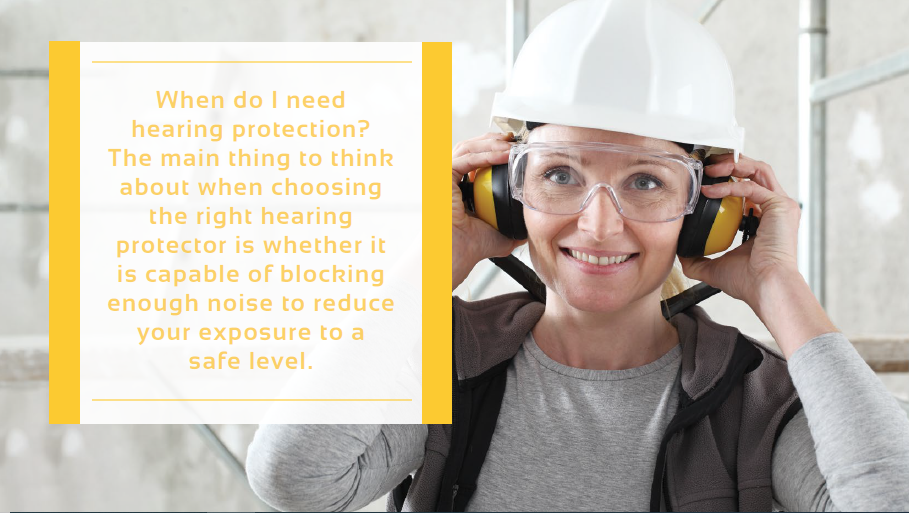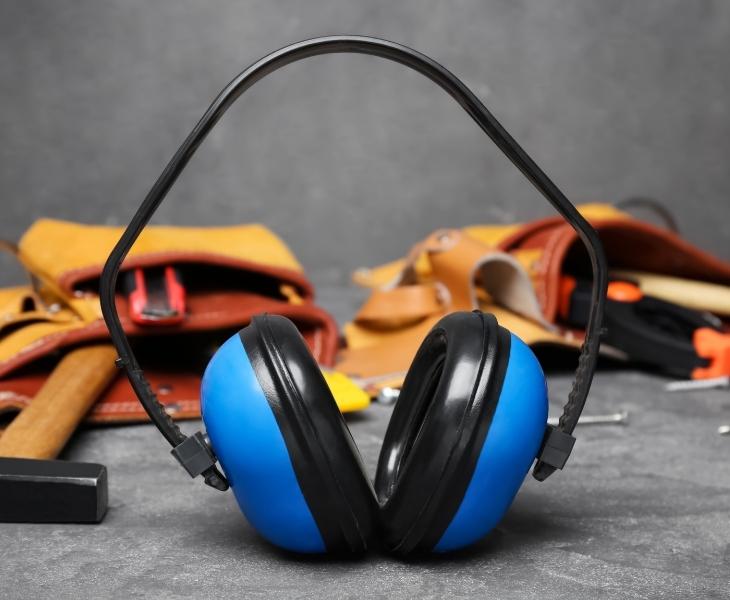Workplaces can be noisy environments. In fact, around a third of the Australian workforce is exposed to loud noises at work. Depending on where you work, you could be exposed on a daily basis to noises that could lead to permanent and incurable hearing damage. It is easy to manage this risk and prevent irreversible hearing loss. But while some workplace noise you can turn down or move away from, you will need to invest in good quality ear protection if this is not possible for you.

If you are working in a loud entertainment venue such as a nightclub, or even if you turn your music up to the maximum volume while wearing headphones, hearing loss is possible in less than 5 minutes of exposure. And even being exposed to the sound of sirens close by you can damage your hearing instantly.
As a general rule, if you are trying to have a conversation with someone standing more than a metre away from you and you have to shout in order to hear each other, then the environmental noise level is too high you need hearing protection.
Consider your Industry
There are many types of ear protection so how can you choose the right option for you? Different industries have to take different considerations into account, and depending on your role and the environment that you work in, you will need to ensure that you choose the right hearing protector.
Noise-related injuries are most common in the construction and manufacturing industries, where technicians, tradies, labourers, drivers and machinery operators are most at risk of this hazard. Long-term exposure to dangerous levels of noise is the most common preventable cause of hearing damage. So, if you find yourself exposed to high levels of noise over a long period of time, you should invest in hearing protection. This is also the case for entertainment and hospitality industry workers, airline staff, first responders, farmers, miners, military personnel, and surprisingly (or unsurprisingly!) school teachers.
Consider your Role Day-to-day
Different types of hearing protection offer different functionalities. You need to ensure that your hearing protection is compatible with other PPE that you use at work. For example, if you wear a hard hat, eye protection, or a mask while working, it may interfere with the seal of an earmuff around the ear and result in sound leakage. Working in a tight space is also not compatible with earmuffs, as they might get knocked off. And working in an extremely hot or cold environment will render your earmuffs uncomfortable or ineffective.
You also need to consider if the noise at your work is continuous or intermittent – earmuffs are much easier to remove and replace than earplugs. You could also use pre-formed earplugs that are easier to remove and replace the foam plugs, but are still compatible with other PPE you might have to wear.
If your hands frequently get dirty while you’re working, you should avoid using foam earplugs because they need to be rolled and inserted into the ear using your fingers putting you at risk of ear infections.

No products were found with the applied settings

